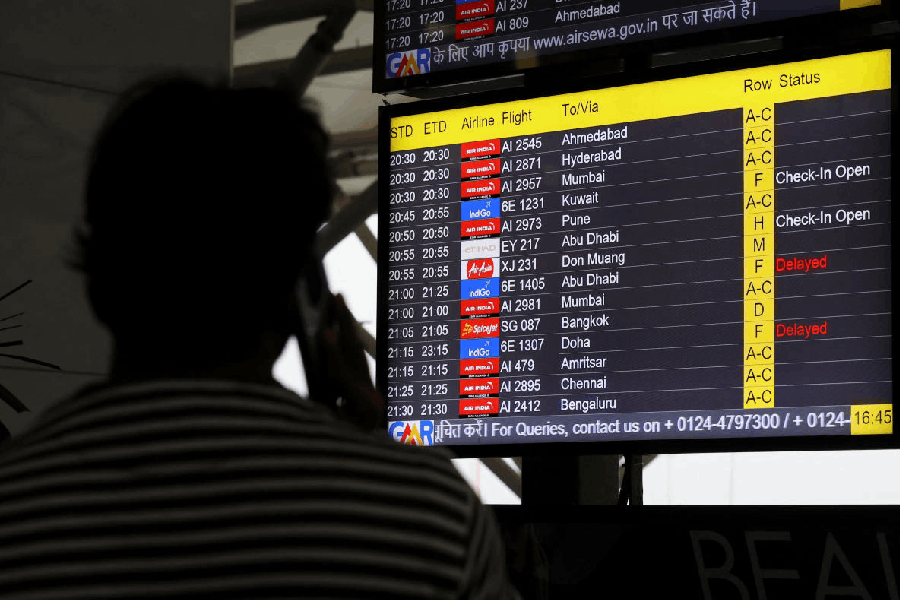The return of the figurehead of the Brahmin should provide us with insights into how Indian politics is undergoing subtle but slippery changes. After the ‘second democratic upsurge’ of the 1990s, featuring the consolidation of other backward classes in the North and the promulgation of Dravidianism in the South, the dominant narrative was that of Brahminism vs Bahujanism. Bahujanism stood for the marginalised majority, while Brahminism represented a privileged minority; Bahujanism stood for a ‘secular upsurge’, while Brahminism promoted communalism to protect the interests of caste Hindus. Buddhism represented the Bahujan philosophy, while Manu stood representative of Brahminical proclivities. The return of Brahminism runs on learning from the pitfalls of the first experience and also on the weakening of the hold of Bahujanism on the marginalised.
In what is described as the Gandhi-Ambedkar debate, Gandhi had argued not for caste but the varna system as a Hindu way of preserving social collectives without conflict. For M.K. Gandhi, varna taught us the ethics of self-restraint. Gandhi argued against inter-caste marriage because he saw it as a transgression. He had an even more idiosyncratic reasoning to avoid inter-dining between castes because eating, like defecation, was an obscene act to be carried out in private. B.R. Ambedkar was dismissive of such formulations and felt that the shift from caste to varna made no difference to discrimination.
It seems that the Gandhian ethic has prevailed over Ambedkar’s search for civic republicanism. A survey by the Pew Research Center found that the overwhelming ethic, cutting across castes and religions, is that of ‘living together, separately’. Indians value diversity but prefer separate habitations and maintain their own identities. Gandhi seems to have prevailed over Ambedkar in his idea of transformation grounded on Hindu religiosity too. Today, OBCs are responding positively to ‘Shiv charchas’; Dalits don’t see the Hindu identity as an anathema. They can derive a sense of belonging even if social inclusion is not egalitarian.
The return of the Brahmin as the figurehead is more in the Gandhian mould. Today, there are Brahmin parishads to offer the community monetary help, loans and fellowships. Advertisements for separate apartments for Brahmins in a city like Bangalore are not uncommon. Even mythology has been tweaked. Since most Hindu gods are non-Brahmins, Parashurama has been rediscovered as a warrior-Brahmin deity who fought to preserve the interests of the Brahmins against the Kshatriyas. Mayawati and Akhilesh Yadav have promised the inauguration of Parashurama’s statues as a mark of respect for the Brahmin sage.
The ‘New Brahmin’ does not need to vouch for the Manusmriti: instead, he appeals for the preservation of culture and community sans the language of superiority. Furthermore, the push for a caste census could lead to the leitmotifs of culture, community and civilisation replacing the hierarchies of caste and religion. The inclusion of the subaltern castes in development and political representation could also lead to a lateral reading of Hindu culture as envisaged by Gandhi.
Ambedkar’s signification might be undergoing a change. There has been a subtle Hinduisation of Ambedkar through his conversion to the Father of the Constitution from being a bitter critique of the ‘riddles of Hinduism’. There has neither been a reform of Hinduism as suggested by Gandhi, nor the overthrow of the Hindu social order, which was Ambedkar’s dream. What we have instead is the emergence of Hinduism as a ‘civil religion’ that is also a political project.
Where does that leave discrimination and segregation in Hinduism? Discrimination and indignities continue but the language of articulation has changed. One can question Brahminism, like Ambedkar did, but one cannot do it to preserve the identities of one’s own caste. Bahujanism needs a new philosophy now that Brahminism has a fresh lease of life.
Ajay Gudavarthy is Associate Professor, Centre for Political Studies, JNU










